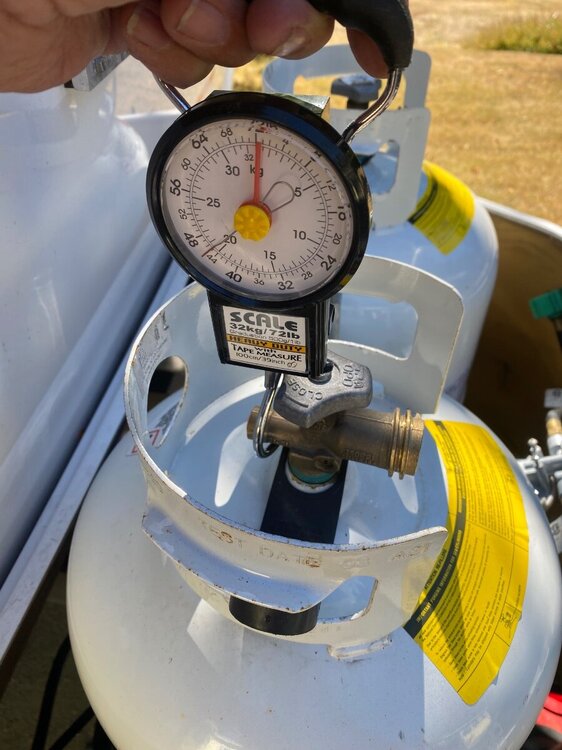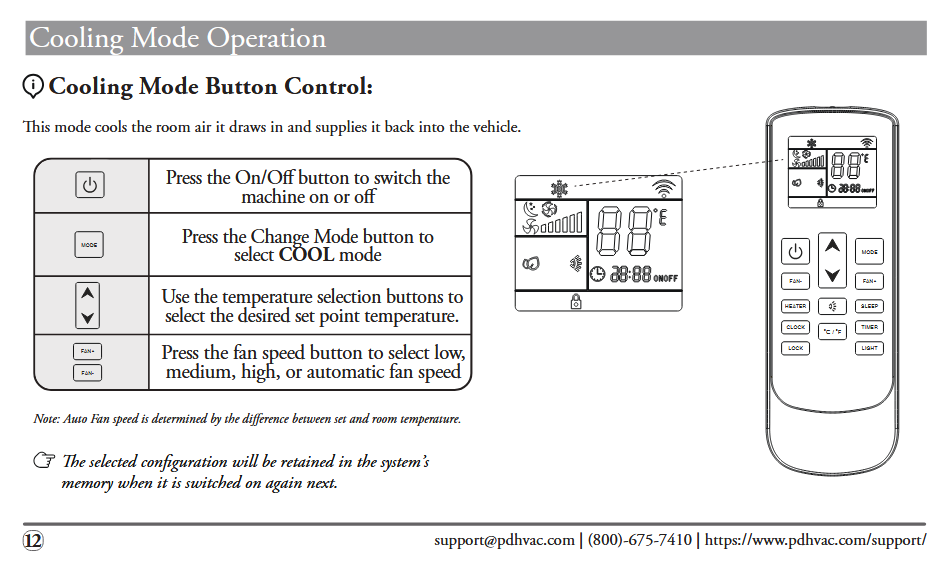All Activity
- Today
-
Installing Pioneer Inverter AC
Treasure Coast Vault replied to Treasure Coast Vault's topic in Ollie Modifications
Do any of the RV AC Systems have a variable speed fan for pushing the climatized Air? I had a few mini splits in homes and I never saw one that had a variable fan for the climatized air. All were 3 speeds L, M, H and Auto. None shut off after the cycle completed. This is what makes the Cielo Breeze Max T Stat so good it shuts the fan off after the cycle completes if you want that to happen. -
After looking at several options, I thought to buy this simple item to think through the possibilities! Hope to use it soon! I would not screw down the cover as designed. Instead, I would think of a simple way to clamshell the two halves together while being waterproof. You need to change batteries every half day. Therefore, the container must open and close simply! Rain is rare where we live and camp, so I could build a waterproof box, redundant wiring, $50 total as an option, to use on rainy weather days. Use the simple harness I've built 80% of the time... when it's just another sunny day in Arizona! Our 10 Ah DeWalt batteries, measuring 5.5x3.5x3.5", should fit nicely in this case and soon we shall have a simple waterproof casing. 😂 https://www.amazon.com/dp/B0DHL1F4FV/?th=1
-
On a recent trip from Dallas to South Carolina we stayed in multiple locations with no (or very limited) communications capabilities (cell phone or WiFi). Over the three years we have owned our LEII, there have been many other occasions with no ability to communicate. As a result, we decided to order a Starlink Mini and a Starlink Router Mini to use on our trailer trips. I have been following Starlink related postings on the OTT Owners Forum, especially since the release of the Starlink Mini. I have found the postings by @Snackchaser particularly helpful in planning the installation of our Starlink system. I especially liked the use of a Power over Ethernet (PoE) injector to power the Starlink Mini and to provide an Ethernet connection from the built-in router back to the trailer, using a single cable. Installing the PoE injector and a DC powered router in the attic of the LEII seemed a reasonable location, being nearly directly above the exterior Furrion ports for connecting satellite and cable TV. So I planned to install in a similar location in the attic of our LEII, assembling a list of the components required. I ordered a PoE injector from MobileMustHave.com and the rest from Amazon. Once all the key components had been delivered, I began the installation, with the first step being to replace the Furrion Satellite coax port with an RJ45 pass-through connector and to fish an Ethernet cable from the basement to the attic. Replacing the Furrion coax connector with the RJ45 pass-through connector was no problem, even though enlarging the hole through fiberglass exterior shell was required. However, fishing an Ethernet cable from the basement to the attic proved to be a major obstacle. Although I have prior experience fishing wires through difficult spaces, I was unsuccessful getting a fish tape (or rods) from the attic to the basement. I could get the end of the fish tape rods down near the ceiling of the basement, where the interior shell ends and multiple cables run up to the attic area at the rear of the trailer, but not into the basement. As suggested, I tried following the A/C drain line and multiple other locations but could not get past the bottom of the inner shell into the basement. I tried running the fish tape/rods in both directions. No luck. Consequently, I began to ponder other installation locations inside the trailer for the PoE injector and Starlink Router Mini. After a couple of days, I had an Aha! moment- install the PoE Injector and Router Mini under the rear dinette seat. I inspected the space between the basement and the rear dinette seat, nearly all of which is readily accessible from the two rear street side hatches and the rear dinette seat hatch. Only the space under the battery compartment is not accessible from directly above, but is easily accessed from either side. I looked for any obstacles to using this location and found none. I could easily route the Ethernet cable from the Furrion/RJ45 pass-through connector forward to beneath the rear dinette seat. I located the PoE Injector atop the trailer frame member, just below the Progressive surge protector box, which is mounted on the aisle wall of the rear dinette seat. The PoE jack and the power terminals of the PoE Injector are positioned toward the front of the trailer. I connected a 20 foot shielded Cat 6 cable from the inner side of the Furrion/ RJ45 port, then routed it under the floor of the basement, around the street side rear stabilizer, then following the waste water line, forward to the area under the rear dinette hatch. About 3 feet of excess cable are coiled in the basement, concealed by the rear wall of the basement. I installed a lighted rocker switch through the forward basement wall, mounted high, almost directly above the side-to-side bubble level on the left side of the basement entry. This switch is to control 12VDC power to the PoE Injector and the Starlink Router Mini. Using 14 AWG silicone coated wire, I ran two purple colored wires from the space beneath the rear dinette hatch back to the rocker switch on the forward basement wall. A third, 14 AWG black wire was also run along the same route to the rocker switch. The switch has two terminals with red lead wires,: one to the DC power source and one to the load. The third terminal has a black wire, which connects to ground (the bus bar). The ground wire enables the light on the switch to operate when DC power is ON. On the DC power panel, position 15, I installed a 15 amp fuse. One of the purple wires connects to the 12VDC positive terminal on the PoE Injector. The other purple wire connects to position 15 on the rear of the DC power panel, using a crimp on connector. The single black wire from the switch connects to the ground bus located under the rear dinette seat. Another 14 AWG wire connects the PoE Injector negative terminal with the other end connecting to the bus bar. All wire-to-wire connections were made using Wago lever lock connectors. I also added a 12VDC auxiliary power outlet (cigarette lighter type) which is connected to the same circuit as that which powers the PoE Injector. An Anker 323 USB-C Car Charger Adapter (USB Power Delivery (PD) capable) plugs into the auxiliary power outlet. A USB-C to Male to DC 3.5 x 1.35mm Male Power Jack is used to power the Starlink Router Mini from the Anker charger. I found the Starlink Router Mini conveniently fits on top of the Progressive Surge Protector box. I later secured it with a releasable zip tie around the surge protector. The 20 foot Cat 6 Ethernet cable from the rear connects to the PoE jack of the PoE Injector. A 5 foot Cat 6 Ethernet cable connects to the LAN jack of the PoE Injector and to the WAN/Satellite port of the Starlink Router Mini. All Cat 6 Ethernet cables used are shielded. I believe this installation location approach has several advantages over an attic installation: Access is MUCH easier. Fishing wires is no challenge. A dedicated circuit from the DC power panel provides power to all Starlink related components. A lighted switch for the PoE Injector and Starlink Router Mini is located in the basement, near the exterior pass-through Ethernet jack. The PoE Injector is located where it cannot be covered by clothing or other cargo stored in the attic which might cause overheating. The VERY bright blue light on the PoE Injector is not visible in the cabin (always ON if power to the PoE Injector is ON). The Starlink Router Mini is located centrally in the trailer and should provide uniform WiFi coverage within the trailer. We have not yet taken the Starlink on a shakedown trip, but plan to do so at the end of August. Regards, Don
-
- 3
-

-
Accurately measure propane level for under $10
dhaig replied to Snackchaser's topic in Mechanical & Technical Tips
Like @Snackchaser, I use a luggage scale to get an accurate read on the propane level in the tanks. I purchased a pair of Mopeka sensors and found them to be unreliable and not very accurate. I had a couple replaced under warranty. They also seemed to have need frequent battery replacement. I would NOT recommend them. Amazon has a large selection of luggage scales for about $10, that are compact and accurate. With tare weight labelled on both tanks there is no mystery to the amount of propane when the total weight is known. Such as: https://www.amazon.com/Etekcity-Portable-Handheld-Suitcase-Temperature/dp/B082LYC2TN/ref=sr_1_7?crid=2PAZR2PQNSA24&dib=eyJ2IjoiMSJ9.lrxtiYiAaOxFumPFwJLLfi-V2pD7fJpKxfsl6UyzsKbSFL3YNBR0L1a7Px8SBzHhhW25VLBh912CrUyahxdkUjT1pqB3pRe933JDFfDr7ZaTgoTCb1mXdfINMMhl5OU0FibEUB2mMbq_9R89XeAeSb5MhrkSnnQ5YT6uUSpTQctrjSJqa-90Rcwkt-jGQLzD4jSFjCSRtp-YFlVIJhme_3etEGEES17uG605HrMmwLGyk2YZsL2lLr-nGzZUe7jC60bztrvKDpr9oVktN97bzUFLTJ8jfQEvF9T4OU-tq1A.NFHYzomQyFXtHPcZxq8NaPUGd5FyqkWMxZL0L2YMZgw&dib_tag=se&keywords=digital%2Bluggage%2Bscale&qid=1754537940&sprefix=digital%2Blugga%2Caps%2C138&sr=8-7&th=1 Don -
Thanks for the question David, and the reminder to source a waterproof casing! 😂 Dewalt batteries are water resistant, not waterproof nor IP rated. Purchase of two (2) waterproof 24v LI batteries would be a good solution if you need something solely for this purpose. I went with DeWalt because I had them for other tools. We don't travel much in rain but had several rainy days on our June trip to Minnesota. One overnight we left the DeWalt battery out, Starlink running. and in the morning it was discharged and drenched! I shook it out, wiped it dry, and let it sit in the sun for a couple hours. Later it charged without issue. I try to place the battery under the dish or somewhere covered, or you could merely wrap in a heavy plastic bag or purchase an IP-rated case. Something like these products might work well as a waterproof casing: https://a.co/d/5I9YH3M https://a.co/d/9JbWYwV
-
.thumb.jpg.e34bf01ef7f7d5e99ad31856d45afbeb.jpg)
Accurately measure propane level for under $10
CRM replied to Snackchaser's topic in Mechanical & Technical Tips
Have two 30lb tanks and never even bother to weigh them. Run one tank until it's empty , switch to the full one, and then just plan on filling the empty one as soon as I can. -

Accurately measure propane level for under $10
Corvus replied to Snackchaser's topic in Mechanical & Technical Tips
I've resorted to using a bathroom scale by taring my weight then lifting tanks to check their weight and several other valid methods. I prefer Mopeka for the convenience, but it's nice, and probably safer, to understand options. Having a way to measure the weight could come in handy in some situations, like boon docking or hurricane dodging. -
How weather resistant is the battery powered set up? Will it with stand a torrential down pour? Is it water proof? We leave out Mini out all night long and do not think about whether it rains or not. Just curious.
- Yesterday
-
All makes sense.... sounds like a deal closer :) Thanks, John John
-
Yes, that's all you need to get started! Later you can add features to make usage easier. I purchased the Mini Router after @Snackchaser proved its effectiveness in allowing for good access speeds at greater distance. I truly purchased it hoping I can interface the Mini Router to our Pepwave router. This would allow one Wi-Fi login and the Pepwave would link the Mini when cell signal is weak. The Mini Router may not be capable of that, but I thought for $40 I'd take a chance. I have not taken the time to use it yet or see if WAN interface to the Pepwave is feasible. We had it onboard for our recent 5-week trip to Minnesota and back and did not need it, did not use it. I thought if distance was an issue somewhere I would break it out of the box, plug it with supplied wiring and give it a try. I'm not comfortable with the Mini being more than, let alone, 50 ft away from the Oliver for reasons of damage to the unit or theft. Most of our trip, being in the Midwest, we did not need Starlink as our T-Mobile and cell router had good signal. In WY and CO we used Starlink quite a bit, but we never needed it to be more than 20-30 ft away from the Oliver, so the Mini Router sat in the box. I prefer when I can place the Mini in the Oliver front basket or the bed of our pickup truck to keep it out of the wind and out of site to other campers. We only had 2-3 days where I had to placed it away from the truck. Minimal setup, just buy the Mini and use the provided power cord and adapter plugged into your 110V outlet, inverter ON. Want to invest more, get a battery setup to move the Mini at will without wires getting in the way. Later, think you need greater distance? Then buy the Mini Router. Wire it to your TT or TV with provided power supply or something custom. This is independent of wiring the Mini dish. The Mini can be wired to the Mini Router by Ethernet cable but they also communicate over air and Geoff proved they're still quite efficient in over-air communication. Now that we are battery-powered cord-free with our Starlink Mini, I would never entertain a wired solution. We just swap and charge batteries twice a day. No winding and storage of power cords!
-
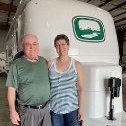
3500 pound versus 5200 pound axles on a LE2
MobileJoy replied to John and Debbie's topic in General Discussion
Regarding price.... We just had 5200 lbs Nev-R-Lube axles and 5-leaf springs installed by ALCAN. Total price was $3,928.28, and that included $141.99 in convenience fee for using a credit card (3.75%). They only accept the equivalent of wire transfers to avoid the convenience fee. They do not accept checks (I didn't ask about cash). Regarding the functionality... Larger brakes did not cause me to reduce the brake controller gain on my OEM controller (2020 F250). I had to increase it initially, but as the brakes adjusted I decreased it back to roughly where it was initially (+5). Braking is MUCH better. The first two tows were 50 miles each, and ALCAN re-torqued the U-bolts each time. Both times the TV had come down, but nothing else was disturbed. We then towed about 237 miles and then 170 miles, and the TV has not come down again. I usually use the stabilizer jacks to take out less than 2" of height on the low side for leveling. When I first tried to take out 1.75", the wheels lifted off the ground. I had to use the Andersen leveling wedges, and found that anything more than 1/2" would cause the wheels to lift off the ground. As we relocated, this improved somewhat, and Tanner said it would improve more as the springs break in. I expect it will be even better riding when I get new shocks. Two of them were blown, and one of these was broken as well. ALCAN fixed it up the best they could, and we ordered Monroe shocks to replace all four. I would have ordered the Bulldog shocks, but the stories on availability had me concerned in the timeframe in which I needed them. They will be installed this coming Monday. -

Accurately measure propane level for under $10
jd1923 replied to Snackchaser's topic in Mechanical & Technical Tips
I also had issues with a first batch of Mopeka sensors, however upon complaint the company sent me a new set that has worked well over our last 60 days of travel. A physical/visual pressure gauge means opening the doghouse to check. A weight scale means opening the doghouse, removing the LP tank hold-done bracket (ours is padlocked) and then having the strength to lift the tank to measure, make LB to % full calculation, and finally remount tank and doghouse! I do like the scale approach better than the visual gauge (also often not accurate), but... How often do you want to do this? When camping, every day we leave the trailer and every night before bed (also when in storage) we check all of our readings by Bluetooth apps. We check the Epoch batteries and all Victron devices to see that batteries are good SOC and amp usage is as expected. Then I check the Ruuvi app for temperatures of 6 sensors (fridge, freezer, truck fridge, basement, cabin, etc.) and we read the Mopeka app for % fill data on both tanks. Want to make sure there is no LP leak (though I would smell it) and I've found when a tank reads 10% or low teens, it's time to switch tanks and then I know we have one to refill. And my favorite device and app is the LevelMate PRO. I would never want to back into a campsite w/o this great tool and app again! With Chris' help, positioning the Andersen Levelers, we get level without me even getting out of the driver's seat! These are getting more expensive, but if I had to open the doghouse I just wouldn't bother, then we'd wake up one cold night, furnace cold, to realize one tank has emptied, time to switch (manually) to the other tank. Love app view of important trailer data! https://www.amazon.com/Mopeka-Pro-Check-Bundle-Wireless/dp/B0BX1CQ6JQ/ -
Hey John, So I can use the supplied 50ft cable and the supplied power adapter connected to my A/C with my inverter and all will work well? I suppose I can also connect to my 1000wh Anker Solix solar generator/battery as well... it also supplies A/C with its internal inverter. I can at least get up and running and figure all the power options at a later date. John
-

Accurately measure propane level for under $10
routlaw replied to Snackchaser's topic in Mechanical & Technical Tips
FWIW, Costco sells 20 lb tanks with a built in gauge. I have only one but it seems to work well enough. Like most things they have had a price increase recently but locally they are running around $42. -
I visited DISHYtech youtube and see it's an SL product :) $40 So, it looks like I should run 1 powered cable out to the mini (using the 50ft provided cable) and one (not provided) from the mini back into the trailer.
-
Accurately measure propane level for under $10
John Dorrer replied to Snackchaser's topic in Mechanical & Technical Tips
Great idea. Do you have a link to the luggage scale? -
Geoff, I appreciate all the time you ( and all ) have taken to help me with my decision. I'll read the rest of your posts today and tomorrow I'll be at the Bozeman BestBuy spending my money :) I think the way for me is the mini. We're not power users...just like to watch a few movies now and then. Most of our use comes through our Verizon data plans, usually at 2 or 3 bars, sometimes 1 :( I'm sure SL will outperform if not too many obstacles. I am interested in using the full length of cord to reach open areas and boost the signal if too far away. Are those Mini Mesh Node Routers generic or specific to the SL? And since much time is spent boondocking we want to use DC when we can. Thanks, John
-
Although there are several ways to check propane tank levels, I’ve found the easiest way for me is a luggage scale. They have large hooks that balance nicely when hooked on to the fill valve, and they remember the weight so you don’t have to contort yourself to see the scale. Mine has an analog dial with a memory needle, and thankfully no batteries. I’d recommend these over ones with batteries that always seem to be dead when you need them. Flame King sells a more expensive scale made for this purpose. It conveniently reads in percentage, but it’s battery operated too. A 30 pound tank weighs around 55 lbs when full, and about 25 lbs when empty. A 20 pound tank is around 37 lbs full and 17 lbs. empty. I’ve labeled my tanks with their weights and I can determine exactly how many pounds are left with the scale. The tanks can be weighed in place with the spin-off clamp loosened, and it helps to put a stick or bar through the scale handle to lift with both hands. I know some people swear by the Mopeka ultrasonic level detectors, and I heard the newer ones work pretty good. But I’m still not over the problems and uncertainty of my old ones, so I’ll stick with my trusty scale for now. Cheers! Geoff
-
Thanks, John!
-
@johnwen if you go with the Mini, I strongly suggest forget about all the wiring schemes and just get a battery for it! You can use the power adapter included 50 ft cord, 30V output plugged into a your 110V outlet with your inverter running. You can do what Geoff did adding a DC converter to up 12V to 24-30V so you can run the longer cable. OR you can just wiring it to any DC battery from 12V to 30V. For us it made perfect sense to go with the DeWalt batteries we already have several Dewalt power tools and batteries we bring with us. They run at 20V which is a good voltage for the Mini. It seems that we get close to 1 hour of runtime for each Ah of battery. I purchased two 10Ah batteries and each runs the mini for 8+ hours. Connect one in the morning. Swap the other before dinner and its will run way past when we fall asleep. We move the Mini anywhere required without untangling and tripping over wiring. I mounted a Dewalt battery charger in the Oliver Attic! This part will connect to any battery terminal: https://www.amazon.com/CERRXIAN-DC5521-Power-Pigtails-Cable/dp/B0F8Q4V9FC/ This part works for DeWalt and there are so many other battery choices: https://www.amazon.com/Adapter-Battery-Converter-Terminals-Robotics/dp/B0CDGR4Y8K/?th=1 BTW, Starlink is offering factory refurbished Minis for $299 now. Sure wish they offered this earlier this year when we made our purchase at 10% off $499.
-
Hey John, Chat GPT is often wrong because it relies on opinions like mine🫢 My opinion is that Gen-3 has slightly better reception because of the larger surface area and its motor driven alignment. However, I don't think it is a significant difference, certainly not enough to offset the benefits of the Mini. When there are too many obstructions, neither one is going to work well. But I agree that the Gen-3 is faster, I think probably because of a better Wifi signal, hence I recommend using the Mini Mesh Node Router with the Mini Dishy. See my post: "The new Starlink Mini router, for what ails you." We used to turn-off the power hungry Gen-3 at night to save our battery, the Mini stays on 24/7, a big benefit. Also, the dishy spends most of its time on a mast, and the heavier Gen-3 on the same mast used to rock the trailer in breeze. The mini is small and light as a feather in comparison. See my post "Tacky Starlink mast." BTW, I see folks buying padded cases and protectors for the Mini, but they're pretty rugged and mine just lives in the hidden drawer below the pantry when traveling. It's more challenging to route the Gen-3 cable into the trailer, I've posted some designs on this too, see: "Great news! Starlink Gen-3 is here and it has Rj45 connectors." Other folks have posted ways to power it from DC, but I've never looked into that. The Mini is easy to power, and there are portable power supplies available that can be taken on hiking trips. I make a 3d printed version with built in battery charger, hit me up if interested. I also have a post on powering the Mini from 12 volts with a 12-48 volt Victron converter, this was for one of the early Mini's and before any commercial solutions were available. See my post: "Starlink Mini installation, cracking the 12 volt barrier... or not." That post also includes a clean method to get the power cord into the trailer. I still use that power supply today, but there are cheaper power supplies now available. Albeit, not as good or energy efficient😆 Hope that helps with your decision process! Cheers, Geoff
-
Well it seems there is no difference (according to ChatGPT) between the 2 concerning obstacle tolerance. The Gen3 is more powerful and faster but the mini's small size is so attractive, and now that it appears they both negotiate obstacles equally I reckon to be back in the mini market :) I don't think I really need the speed difference between the 2. This back and forth frenzy is fast coming to a conclusion...yay!
-
Geoff, Did you see any/much difference in satellite acquisition with regards to obstacles between the Gen3 and the mini? That's my main concern. And where/how did you install the Starlink Gen 3 Step Up Converter? Is there any conversion loss with the converter like there is with my inverter? Thanks so much for your help :) John
-
Weigh Safe 180 Aluminum hitch with 3” shank, 10” drop
John Dorrer replied to Patriot's topic in Towing an Oliver
Great idea. I had one with our off road trailer. I need to check and see if there is room with our mud flap installed on the hitch ball attachment. -

.thumb.jpeg.68ce6c46f7d1e6616ad57ace96ce693c.jpeg)
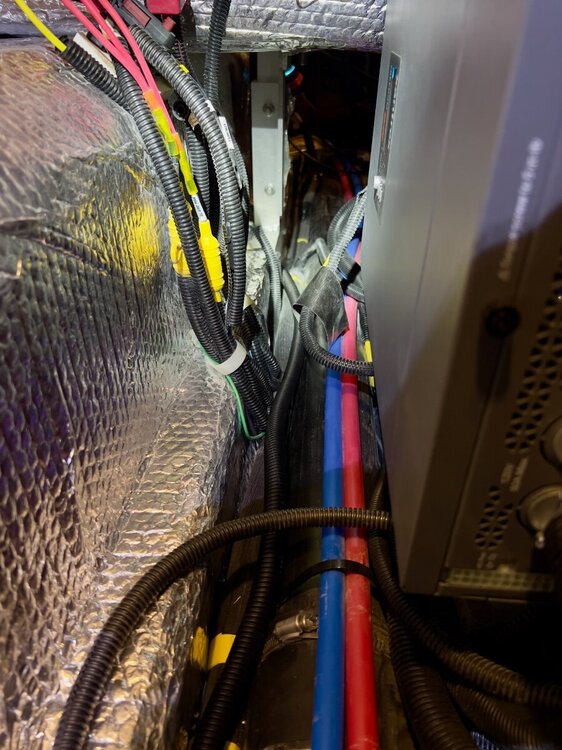

.thumb.jpeg.5c51e10b6df8c7b04557423821e2ca87.jpeg)
forPoEInjector.thumb.jpeg.2d3a22ebf22c78753101dc19af93f47a.jpeg)
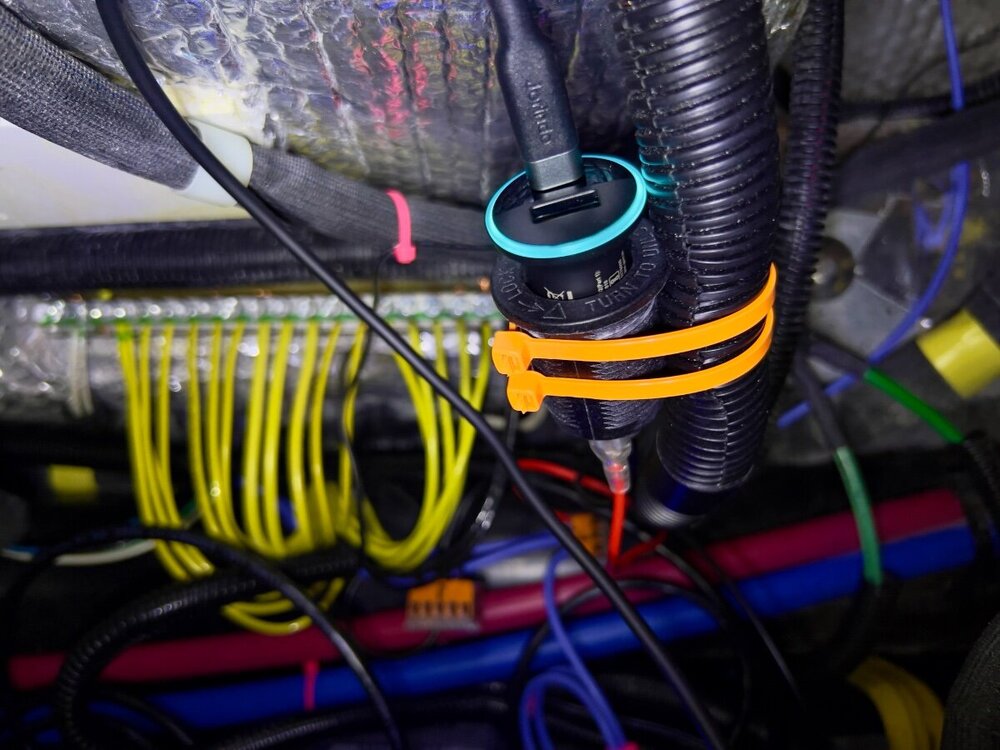
atopProgressiveSurgeProtector.thumb.jpeg.19a73dcde5e0b2f0c1d62e4b93b3337d.jpeg)




